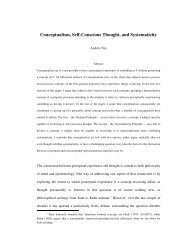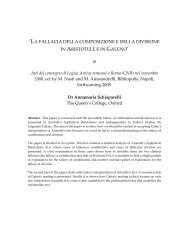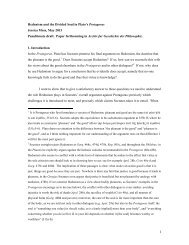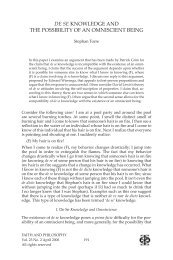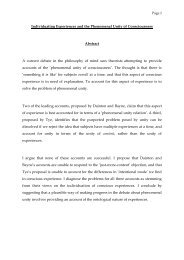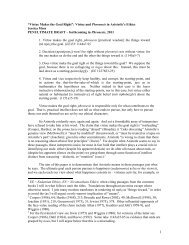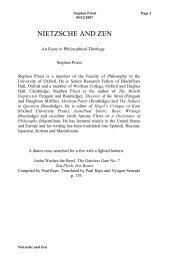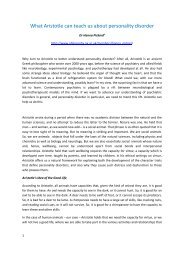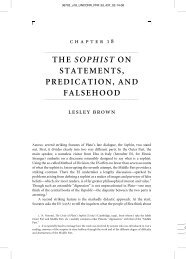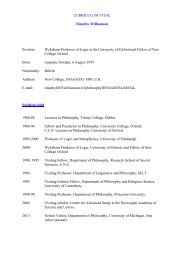Understanding as a Finite Ability Joseph K. Schear Christ Church ...
Understanding as a Finite Ability Joseph K. Schear Christ Church ...
Understanding as a Finite Ability Joseph K. Schear Christ Church ...
Create successful ePaper yourself
Turn your PDF publications into a flip-book with our unique Google optimized e-Paper software.
To appear in Wittgenstein and Heidegger (Routledge, 2013) eds. D. Egan, S. Reynolds, and A.Wendland<br />
of which those entities are what they are, and whether they are. This prior understanding makes<br />
possible, in the sense of enables, comportment toward entities <strong>as</strong> entities.<br />
We can approach Heidegger’s conception of ontological understanding by reminding<br />
ourselves that we, unlike lizards and babies, hold things to standards. vi Consider the following<br />
two examples to illustrate the phenomenon. To be a hammer is to be able, when well wielded, to<br />
drive in nails (among other things). The field of possibilities for being a hammer h<strong>as</strong> developed<br />
through history by human agents engaging in the practice of carpentry. If one picks up a hammer<br />
to discover it wilt like a flower, one h<strong>as</strong> been taken in. It is a gimmick, or maybe a work of art.<br />
The “hammer” is flouting the functional standards that make hammers what they are, and so<br />
could not be a real hammer. Those who understand carpentry, and so make sense of hammers <strong>as</strong><br />
hammers, appreciate this fake hammer for what it is, and would acknowledge its unreality if<br />
challenged. To be a real or actual hammer, after all, is to accord with certain ontological, in this<br />
c<strong>as</strong>e, functional, standards.<br />
Or take a more generic example: To be an ordinary perceptible thing is to behave in more<br />
or less stable and predictable ways. The “laws” of ordinary medium-sized things lay out the field<br />
of possibilities for being such things. For example, if one were to see an object, say a rock, that<br />
pops in and out of existence before one’s eyes, something would be awry, and would be<br />
recognized <strong>as</strong> such by any competent perceiver. The “rock” would be flouting the standards of<br />
substantial independence and persistence that hold for objects, and so could not be any such<br />
thing. Those who understand objects, and so make sense of them <strong>as</strong> such, would find themselves<br />
compelled in this situation to look again, and might very well worry that they have been drugged.<br />
For to be an ordinary perceptible thing is to accord with certain ontological standards.



